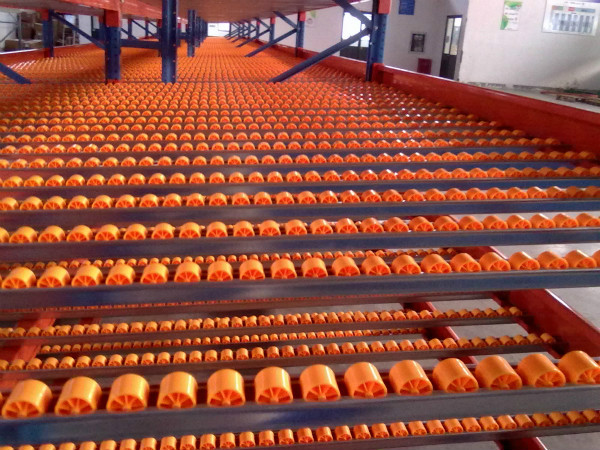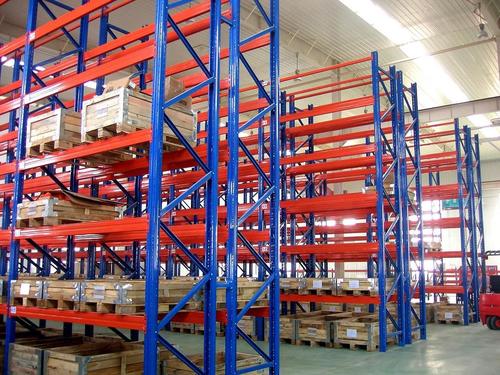In the world of warehousing and logistics, efficient storage solutions are crucial for maximizing space, improving workflow, and ensuring safety. Among the various options available, static pallet racking stands out as a fundamental system used in countless facilities worldwide. This type of racking is designed for stationary storage, where pallets are placed and retrieved using equipment like forklifts, without any automated movement. It is a versatile and cost-effective choice for businesses looking to organize their inventory in a structured manner. In this article, we will explore static pallet racking in depth, covering its essential aspects, benefits, and common challenges. By understanding this system better, you can make informed decisions for your storage needs, whether you are setting up a new warehouse or optimizing an existing one. We will delve into what static pallet racking entails, its key components, advantages, types, installation processes, and typical issues faced by users. This comprehensive overview aims to provide valuable insights without relying on specific brand names, ensuring a neutral and informative read.

Static pallet racking refers to a fixed storage system where pallets are stored on horizontal beams supported by upright frames. Unlike dynamic systems that involve moving parts, static pallet racking remains stationary, allowing for direct access to each pallet. This makes it ideal for environments where inventory turnover varies or where specific items need to be retrieved frequently. The design typically includes adjustable components, enabling customization to accommodate different pallet sizes and weights. Static pallet racking is commonly used in industries such as retail, manufacturing, and distribution centers, where it helps in organizing goods systematically. By providing a sturdy framework, static pallet racking enhances vertical space utilization, which is especially beneficial in facilities with high ceilings. Overall, this system forms the backbone of many storage operations, offering reliability and simplicity.
The basic structure of static pallet racking consists of upright frames, which are the vertical supports, and horizontal beams that create the shelves for pallet placement. These components are often made from high-strength steel to withstand heavy loads and ensure durability. One of the key features of static pallet racking is its selectivity, meaning that each pallet is accessible without moving others, which reduces handling time and minimizes product damage. This accessibility is a significant advantage over bulk storage methods, as it allows for efficient inventory management through methods like FIFO (First-In, First-Out) or LIFO (Last-In, First-Out), depending on the layout. In essence, static pallet racking provides a straightforward yet effective solution for storing a wide range of products, from lightweight items to heavy industrial goods.
Understanding the components of static pallet racking is essential for proper setup and maintenance. The primary elements include upright frames, beams, braces, and safety accessories. Upright frames are the vertical columns that form the backbone of the system, typically designed with punched holes for beam adjustment. These frames come in various heights and capacities to suit different warehouse requirements. Beams, on the other hand, are the horizontal members that connect to the uprights, creating the levels where pallets rest. They are often equipped with safety locks to prevent accidental dislodgement, which is crucial for maintaining stability in static pallet racking installations.
Additionally, braces and connectors play a vital role in reinforcing the structure, ensuring that the static pallet racking can handle dynamic loads and external forces. Diagonal and horizontal braces add rigidity, reducing the risk of sway or collapse. Safety accessories, such as pallet supports, row spacers, and guard rails, are often integrated into static pallet racking systems to enhance protection. For instance, pallet supports help distribute weight evenly, while guard rails prevent forklift impacts. It is important to note that the quality of these components directly impacts the overall performance and longevity of the static pallet racking. Regular inspections and adherence to manufacturer guidelines can help identify wear and tear early, preventing potential failures.
The adoption of static pallet racking brings numerous benefits to warehouse operations. Firstly, it maximizes storage density by utilizing vertical space effectively. In facilities with high ceilings, static pallet racking allows for multiple levels of storage, significantly increasing capacity without expanding the footprint. This is particularly advantageous in urban areas where real estate costs are high. Secondly, static pallet racking offers flexibility through adjustable beams and frames, enabling businesses to reconfigure the layout as inventory needs change. This adaptability reduces long-term costs and supports scalability.
Another key advantage is the ease of access and selectivity provided by static pallet racking. Since each pallet is individually accessible, it streamlines picking and restocking processes, leading to improved efficiency and reduced labor times. This is especially beneficial for businesses with diverse product ranges or those requiring quick order fulfillment. Moreover, static pallet racking enhances safety by providing a organized environment that minimizes clutter and reduces the risk of accidents. Properly installed systems include features like load capacity labels and safety pins, which help operators adhere to best practices. Cost-effectiveness is also a major draw; compared to automated systems, static pallet racking involves lower initial investment and maintenance costs, making it accessible for small to medium-sized enterprises. Overall, the reliability and simplicity of static pallet racking make it a popular choice for optimizing warehouse performance.
Static pallet racking is not a one-size-fits-all solution; it comes in various configurations to meet specific storage needs. The most common type is selective racking, which allows direct access to every pallet and is ideal for facilities with high SKU diversity. This configuration of static pallet racking is versatile and easy to install, making it a go-to option for many warehouses. Another popular variant is drive-in or drive-through racking, which, while still under the static pallet racking umbrella, involves deeper storage lanes where forklifts drive into the structure to place or retrieve pallets. This type is suitable for high-density storage of homogeneous products, though it may reduce accessibility compared to selective systems.
Push-back racking is another configuration that incorporates slight dynamics but is often grouped with static pallet racking due to its fixed framework. It uses a series of nested carts on inclined rails, allowing pallets to be stored deeper and retrieved by pushing newer loads backward. This maximizes density while maintaining some selectivity. Additionally, pallet flow racking, which uses gravity rollers to move pallets, can be considered a hybrid, but its static framework aligns with the principles of static pallet racking. Each configuration has its pros and cons, and the choice depends on factors like inventory turnover, product variety, and available space. By selecting the right type of static pallet racking, businesses can achieve a balance between storage capacity and operational efficiency.

Proper installation is critical for the safety and functionality of static pallet racking systems. The process begins with a thorough site assessment, including floor condition, ceiling height, and load requirements. It is recommended to involve professional installers who are trained in assembling static pallet racking according to industry standards. During installation, components must be aligned correctly, and bolts tightened to specified torques to prevent structural weaknesses. Anchoring the upright frames to the floor is essential for stability, especially in areas prone to seismic activity or high traffic.
Safety considerations for static pallet racking extend beyond installation to daily operations. Regular inspections should be conducted to check for damage, such as bent beams or loose connections, which could compromise integrity. Load capacity must never be exceeded, and pallets should be evenly distributed to avoid overloading. Training for forklift operators is crucial, as impacts are a common cause of damage in static pallet racking systems. Implementing safety protocols, like using warning signs and designated aisles, can reduce collision risks. Furthermore, adherence to local regulations and standards, such as those from OSHA or equivalent bodies, ensures compliance and minimizes liability. By prioritizing these aspects, businesses can maintain a safe and efficient static pallet racking environment that supports long-term operations.
Despite its reliability, static pallet racking can encounter several common issues that affect performance and safety. One frequent problem is overloading, where users exceed the designated weight capacity, leading to beam deflection or collapse. To address this, it is vital to clearly label load limits and conduct regular training on proper loading techniques. Another issue is misalignment or poor installation, which can cause instability. If not corrected early, this may result in costly repairs or accidents. Solutions include periodic professional audits and using quality components during initial setup.
Damage from forklift impacts is another prevalent concern in static pallet racking systems. Even minor collisions can weaken the structure over time. Implementing protective measures, such as column guards and bumper posts, can mitigate this risk. Additionally, wear and tear from daily use, like corrosion or loose bolts, should be addressed promptly through maintenance schedules. Inventory management challenges, such as inefficient space utilization or poor organization, can also arise with static pallet racking. Utilizing warehouse management systems (WMS) alongside the racking can optimize slotting and reduce these issues. Lastly, accessibility problems might occur in high-density configurations, but these can be alleviated by choosing the right static pallet racking type for the inventory profile. By proactively managing these common issues, businesses can extend the lifespan of their static pallet racking and ensure smoother operations.
In conclusion, static pallet racking is a cornerstone of modern warehousing, offering a blend of efficiency, flexibility, and safety. From its basic components to various configurations, this system adapts to diverse storage needs while providing cost-effective solutions. However, like any equipment, it requires careful installation, regular maintenance, and adherence to safety guidelines to prevent common problems. By understanding the intricacies of static pallet racking, businesses can leverage its full potential to enhance their logistics processes. Whether you are new to this system or looking to refine an existing setup, the insights shared here can guide you toward a more organized and productive storage environment. Remember, investing in quality static pallet racking and best practices pays off in the long run, supporting sustainable growth and operational excellence.
 Wechat
Wechat
 Whatsapp
Whatsapp